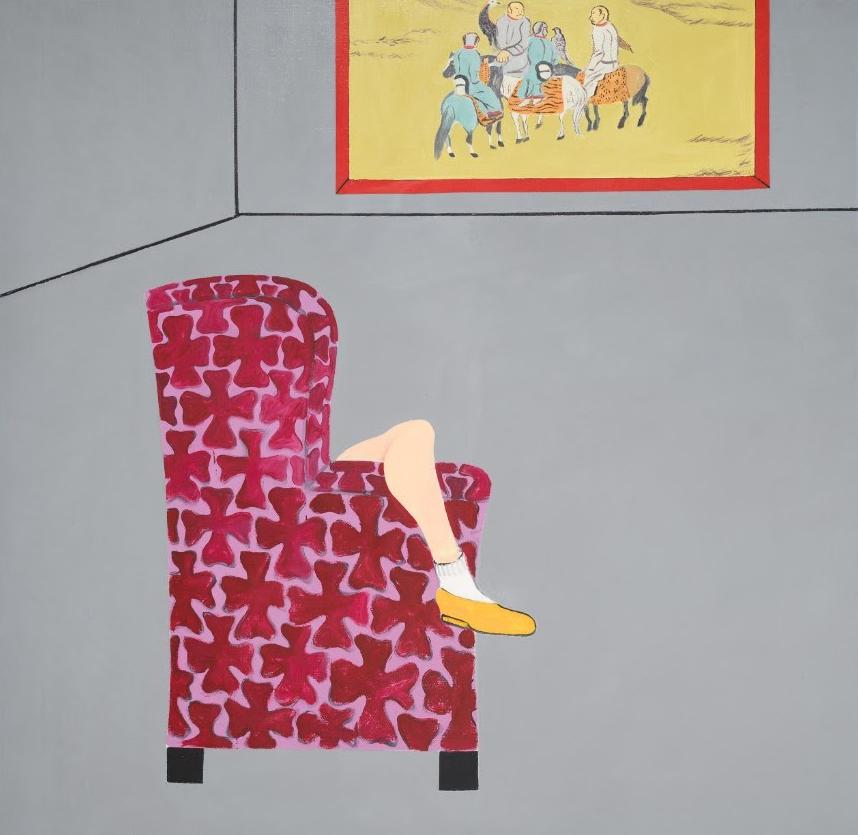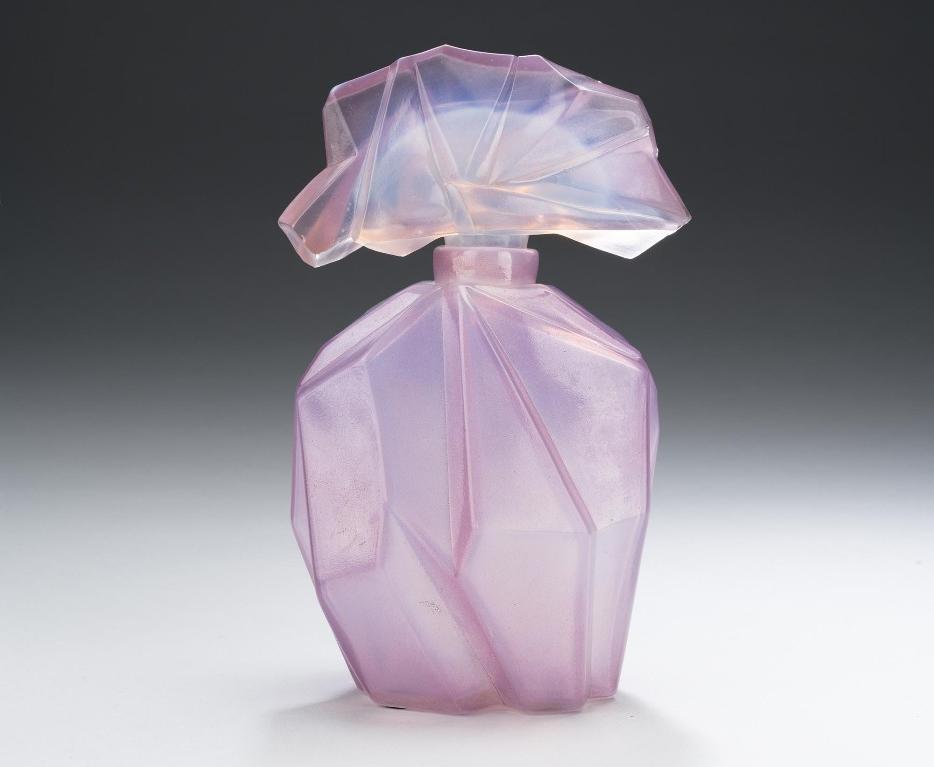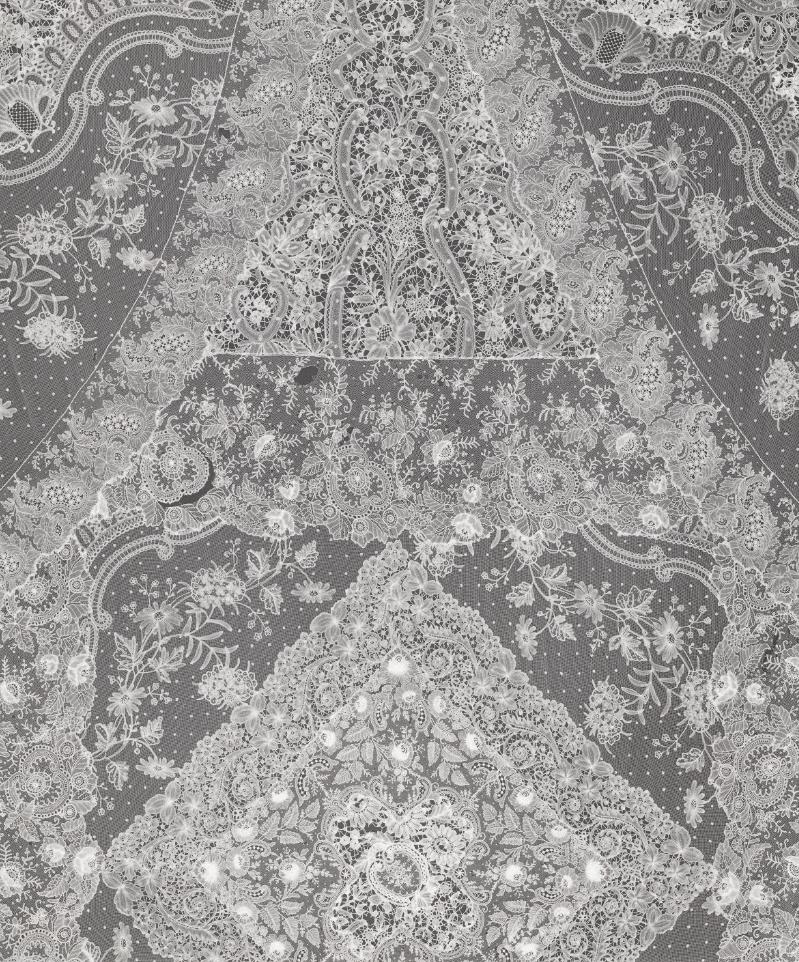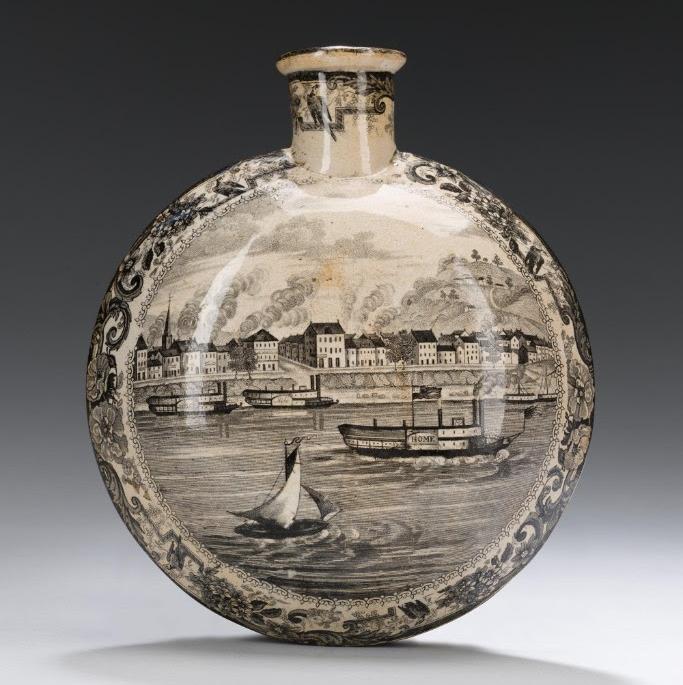This perfume bottle was a part of the Ruba Rombic line of glassware manufactured at the Consolidated Lamp and Glass Company in Coraopolis, PA around 1928. Inspired by modern art, including Cubism, the Ruba Rombic line was sold around the country for a limited time. This bottle’s beautiful, iridescent lilac color is rare.

Joan Brown, The Room, Part I, 1975, oil enamel on canvas. Purchase, gifts of Paul Chanin, Samuel Kootz, and Dr. and Mrs. Laibe A. Kessler, by exchange.
Carnegie Museum of Art announces recent collection acquisitions. These highlights in contemporary art, decorative arts, and photography join the museum’s collection of over 30,000 works. Three of them, by Joan Brown, Alex Katz, and Pope.L, will debut in Crossroads: Carnegie Museum of Art’s Collection, 1945 to Now, opening July 20.
San Francisco–born painter Joan Brown is best known for her large-scale self-portraits, which combine bright, cartoonish drawing with a Beat sensibility and her own personal lexicon of symbols. The Room, Part 1 (above) is a particularly introspective self-portrait depicting an isolated figure studying a painting of Chinese Kazakhs of the Altai mountain range in western Mongolia. It signals a shift when Brown began to seek spiritual and metaphysical awakening through research into non-Western cultures and religions.

Consolidated Lamp & Glass Co. (manufacturer), Reuben Haley (designer), Ruba Rombic toilet bottle, 1928–1932, glass. Carnegie Museum of Art, James L. Winokur Fund and the Elizabeth A. Drain Fund.

Jaydan Moore, Platter / Rather, 2016, found and reconfigured silver-plated platters. Carnegie Museum of Art, Second Century Acquisition Fund.
“One man’s trash is another man’s treasure,” or so the saying goes. In this beautiful, ornamental wall plaque, artist Jayden Moore reconfigures dozens of 19th- or 20th-century silver-plated platters. With fussy engraved decoration, the trays represent the modern democratization of silver with more affordable, silver-plated base metal. Banal inscriptions, such “Crestwood Farms / Garden Club / 1975–1977” reveal the longstanding tradition of commemorative plaques and trophies. Despite the legacy of traditions that elevated such objects, all the platters in this work ceased to matter. They were discarded, trashed, and forgotten. Moore picks up the pieces, literally, and refashions them with metal snips, solder, and a jeweler’s saw. His meditative, finished work is more interesting today than any of its component parts.

Lisa Oppenheim, Leisure Work III (Top), 2013, gelatin silver print. Purchased with funds provided by The William Talbott Hillman Foundation.
For this work, Lisa Oppenheim placed lace directly on top of photographic paper and exposed it to light, creating a direct negative or “photogram.” This process was invented by William Henry Fox Talbot, the originator of photography on paper and an inspiration for Oppenheim. The title is a reference to the classification of female lace makers in early 20th-century Belgium as “leisure workers,” which prevented them from being able to vote.

Pope.L, Fountain (reparations version), 2016–2017, acrylic, oil, oil stick, chalk, and chewing gum on porcelain fountain. Carnegie Museum of Art, A. W. Mellon Acquisition Endowment Fund.
The multidisciplinary, Chicago-based artist Pope.L has been challenging notions of race, class, and social stereotyping with his work across a variety of mediums since the late 1970s. His work was included in CMOA’s exhibition 20/20: The Studio Museum in Harlem and Carnegie Museum of Art in 2017.Fountain (reparations version) unites many of the artist’s recurring interests such as artist Marcel Duchamp’s “readymades,” the history of Jim Crow laws in America, and the Flint water crisis in Michigan.

Unknown British, Flask, ca. 1830, transfer-printed earthenware. Carnegie Museum of Art, Berdan Memorial Trust Fund, Elizabeth A. Drain Fund and the Mary Murtland Wurts Fund.
Although this earthenware flask or canteen was manufactured in England, it was designed for export to the United States. The image on both sides, which was transferred to the clay by printing on tissue paper, depicts a busy day along the Monongahela River, just south of downtown Pittsburgh, in the early 19th century.






















![DEl Kathryn Barton [Australian b. 1972] the more than human love , 2025 Acrylic on French linen 78 3/4 x 137 3/4 inches 200 x 350 cm Framed dimensions: 79 7/8 x 139 inches 203 x 353 cm](/sites/default/files/styles/image_5_column/public/ab15211bartonthe-more-human-lovelg.jpg?itok=wW_Qrve3)



